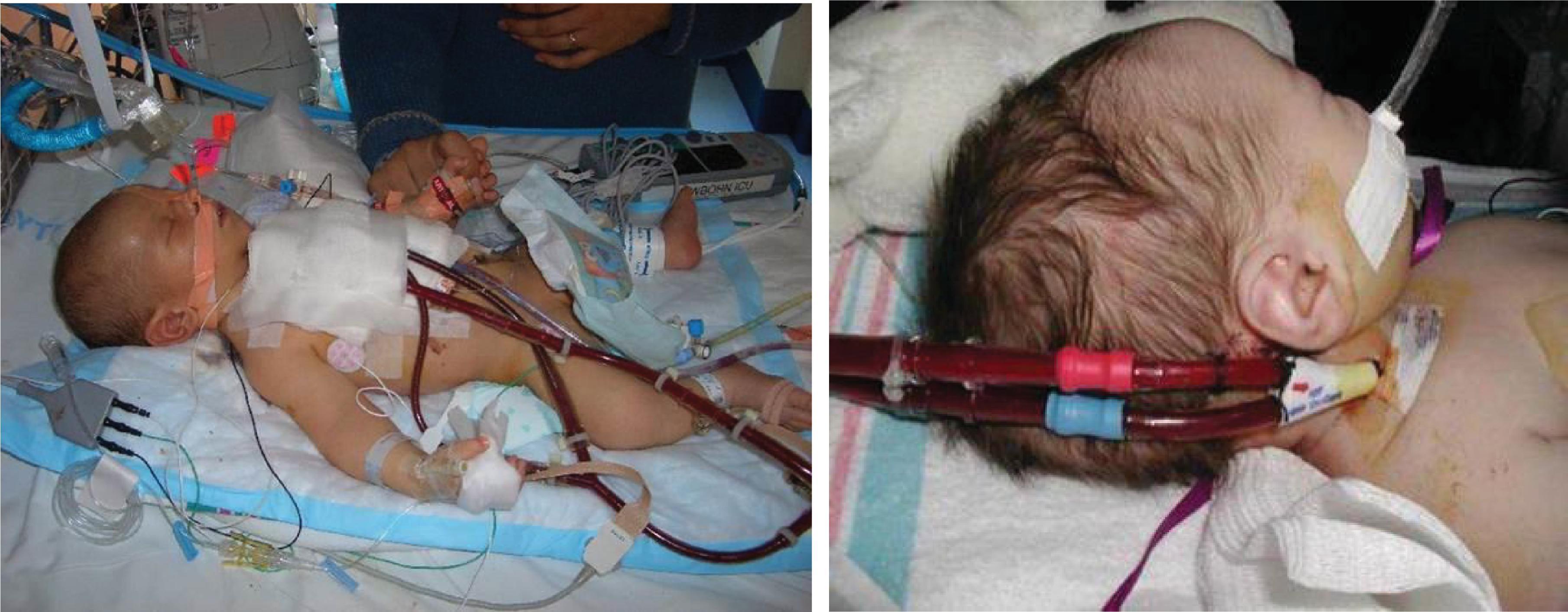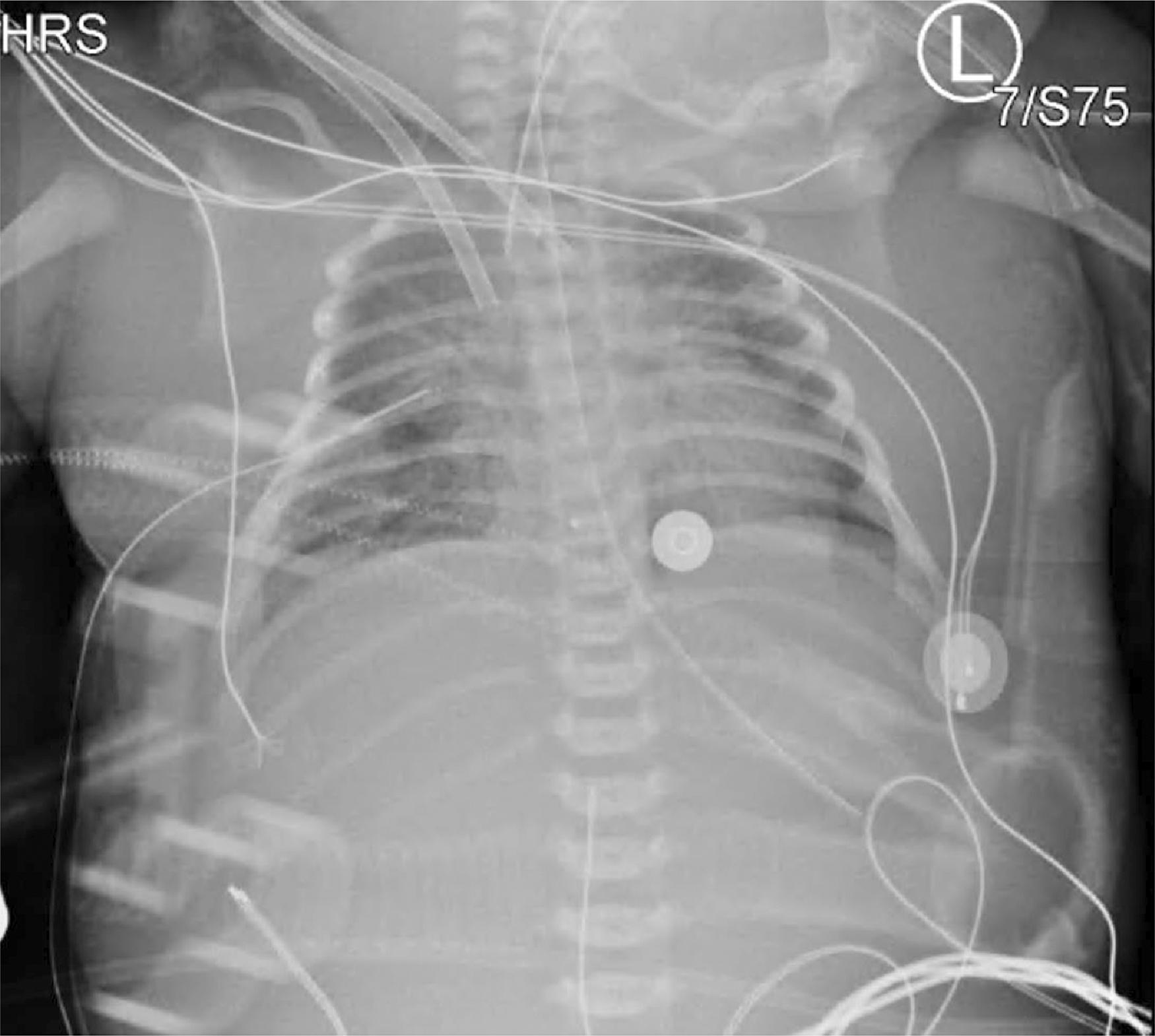Physical Address
304 North Cardinal St.
Dorchester Center, MA 02124
Extracorporeal membrane oxygenation (ECMO) is a potentially life-saving technology for newborns with refractory cardiopulmonary failure of reversible etiology.
ECMO involves draining deoxygenated venous blood, extracorporeal oxygenation and removal of carbon dioxide from the blood, and returning the blood via an infusion cannula either into a vein or artery.
Cannulation can either be peripheral, via the neck or femoral vessels, or centrally, via the right atrium and ascending aorta.
The most frequent respiratory indications for ECMO include congenital diaphragmatic hernias and meconium aspiration syndrome. It has also been long used for neonates with congenital diaphragmatic hernia refractory to maximal conventional therapy. In severe cases of persistent pulmonary hypertension of the newborn (up to 40%) that fail to respond to medical therapy including the use of vasodilatory agents, ECMO may be used to provide adequate gas exchange.
ECMO is frequently needed in neonates with congenital cardiac defects such as hypoplastic left heart syndrome, cyanotic defects with decreased or shunted pulmonary flow, left or right ventricular outflow tract obstruction, and septal defects with refractory cardiac arrest. ECMO support prior to definitive repair can improve survival.
Extracorporeal cardiopulmonary resuscitation is rapid deployment of venoarterial ECMO to provide circulatory support in patients in whom conventional cardiopulmonary resuscitation for 20 consecutive minutes is unsuccessful in achieving sustained return of spontaneous circulation. This can improve outcomes.
Extracorporeal membrane oxygenation (ECMO) is a potentially life-saving technology for newborns with refractory cardiopulmonary failure of reversible etiology. ECMO involves draining deoxygenated venous blood, extracorporeal gas exchange thereby oxygenating and removing carbon dioxide from the blood, and returning the blood via an infusion cannula either into a vein (venovenous ECMO) or artery (venoarterial ECMO; Fig. 82.1 ). Cannulation can be either peripheral, most commonly via the neck or femoral vessels, or central, usually via the right atrium and ascending aorta ( Fig. 82.2 ). In neonates, peripheral cannulation usually occurs via the internal jugular vein and carotid artery, because the femoral vessels are diminutive, technically challenging, and associated with greater complications. Dual lumen single-stage cannulas also exist, which have two separate lumens for infusion and drainage and are usually placed in the neck under fluoroscopic or echocardiographic guidance.


The use of ECMO in the neonatal population has expanded significantly since its inception in the early 1970s, due to a combination of improved technology, the expanding role of ECMO, and its encouraging outcomes. Indications for ECMO in the neonate can be broadly grouped into those that are intended to manage primary respiratory failure or cardiac failure or those following refractory cardiac arrest (extracorporeal cardiopulmonary resuscitation [ECPR]). This chapter uses the most recent literature to review current indications, applications, complications, and outcomes for ECMO in the neonate and discusses current controversies with respect to patient selection and ECMO management in this critically ill population.
The use of ECMO has increased substantially in children and neonates during the past 3 decades, with roughly 3000 children placed on ECMO in 2019 according to the Extracorporeal Life Support Organization (ELSO) database. Among all children, roughly 800 neonates were cannulated onto ECMO for respiratory disease in 2019, an overall decrease from 1300 to 1500 neonates cannulated onto ECMO for respiratory disease annually from 1990 to 1994. Survival of neonates placed on ECMO for respiratory disease has decreased from roughly 80% in 1990 to 60%-65% in 2020, thought to be largely a result of expanding indications and placing sicker children on ECMO as technology continues to improve and ECMO management continues to evolve. From 2014 through 2020, the overall survival to discharge for neonates on ECMO for pulmonary indications was approximately 68%. Similarly, the use of ECMO has increased overall in neonates with cardiac disease, from less than 100 patients in the early 1990s to approximately 450 patients annually from 2015 to 2020. Survival in this population has ranged from 32% to 50% annually, with an overall similar survival-to-discharge rate of 50%, similar to the 1990s survival rate. As with neonates with respiratory disease, this relatively stagnant survival among patients with cardiac disease cannulated onto ECMO was thought to be due to increasing medical complexity of the underlying cardiac disease and associated comorbidities. For neonates cannulated onto ECMO for cardiopulmonary resuscitation (CPR), overall survival to discharge is roughly 40% to 45%.
Become a Clinical Tree membership for Full access and enjoy Unlimited articles
If you are a member. Log in here